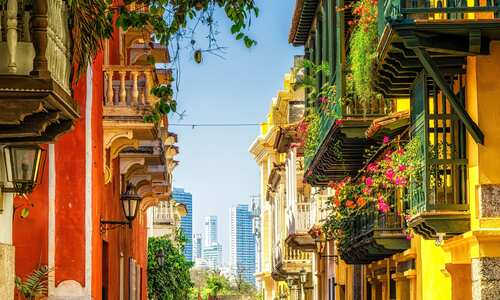Introduction
Cartagena is one of the most vibrant and beautiful cities on the continent, a hotbed of salsa music, street food, literature, film and colonial history. Colombia's fifth-largest city was founded by conquistadors in 1533 and named Cartagena de Indias, the Spanish believing that they had reached the Far East when they first landed in the New World.
It soon became the most important port on the Caribbean coast, a storage point for the treasures of the Americas before they were transported to Spain. A series of fortresses and imposing city walls were built to protect Cartagena, and a walk around the ramparts of the walls is a great way to get your bearings and a feel for the city within. Castillo San Felipe de Barajas, on San Lazaro hill, to the east of the city, was the largest Spanish fort in the Americas, with lots of tunnels dug in the rock beneath it, which can be visited today.
Jesuit churches and monasteries, colonial mansions and several excellent museums line the narrow streets and plazas of the walled old city, among the hotels and apartments of the modern era. The clock tower of Torre del Reloj is another prominent Cartagena landmark and a symbol of the city.
Besides its colonial architecture, Cartagena is also blessed with some sandy beaches close by, two of the most popular being Bocagrande and Marbella - where locals come to swim and sunbathe. The Islas del Rosario and Islas San Bernardo, just down the coast from Cartagena, make an excellent day trip from the city, with fine sandy beaches and opportunities for boat trips, snorkelling and diving.






